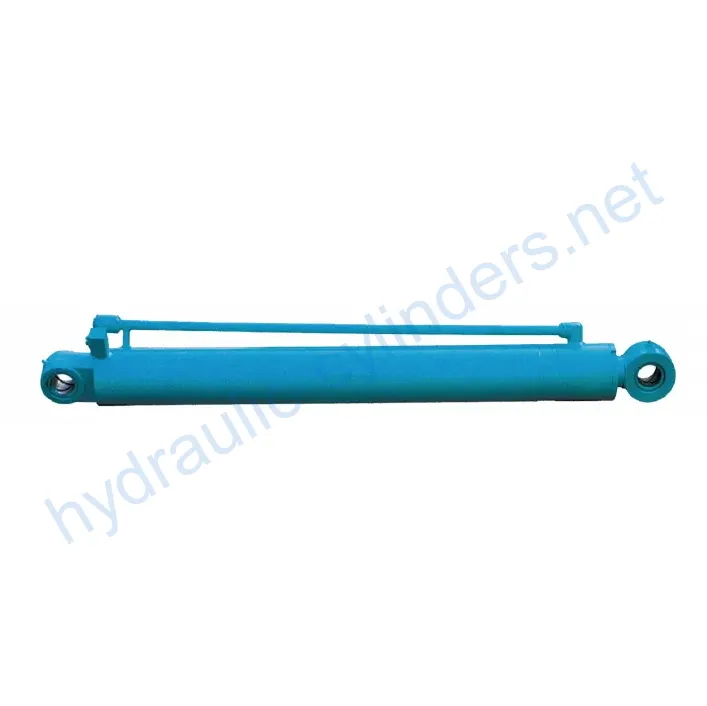Arm Cylinder For Lishide Middle Excavator SC200.8H
Arm Cylinder For Lishide Middle Excavator SC200.8H
Introduction
The arm cylinder is a specially designed hydraulic cylinder that is primarily used to provide linear motion and power to the arm of various machinery, such as excavators, cranes, and mechanical arms. The arm cylinder plays a crucial role in hydraulic systems, enabling the efficient movement and control of additional tools or attachments. These cylinders not only ensure smooth motion but also withstand heavy loads, ensuring efficient operation and reliability of the machinery under various working conditions.

Features
- High Efficiency Transmission: The arm cylinder provides powerful linear motion and force, ensuring high-performance capabilities in various operations.
- Precise Control: Through the hydraulic system, the arm cylinder allows for precise motion control, making the operation of attached tools more flexible and accurate.
- Durability: Arm cylinders are typically manufactured using high-strength materials, offering excellent wear and corrosion resistance, making them suitable for long-term use in harsh environments.
- Versatile Adaptability: These cylinders can be widely applied in various machinery equipment, such as excavators, cranes, and mechanical arms, adapting to different work requirements.
- Easy Maintenance: Designed with ease of maintenance and replacement in mind, regular inspections and upkeep become more convenient, reducing equipment downtime.

Applications
The arm cylinder finds applications in various industries and scenarios:
- Construction Engineering: In excavators and cranes, the arm cylinder controls the movement of buckets or booms for earthmoving, material handling, and structural installation.
- Manufacturing: In automated production lines, the arm cylinder enables the motion of mechanical arms for assembly, welding, and handling processes, improving production efficiency and precision.
- Agricultural Machinery: In agricultural equipment such as harvesters and seeders, the arm cylinder controls the movement of operating arms for tasks like seeding, fertilizing, and harvesting.
- Mining: In mining equipment, the arm cylinder controls the arm movement of mining machinery for ore extraction and transportation.
- Logistics and Transportation: In forklifts and handling robots, the arm cylinder controls the lifting and movement of forks to facilitate material handling and stacking.
Design Considerations and Selection Criteria
When designing arm cylinders, various factors are taken into consideration:
- Load-Bearing Capacity: Discuss the importance of the arm cylinder’s ability to handle different loads.
- Sealing: Explain the use of various seals, such as piston seals and rod seals, made from wear-resistant materials like polyurethane and nitrile rubber.
- Durability: Highlight the fine surface treatment on the cylinder body and threaded ends to enhance wear resistance.
- Safety: Emphasize the importance of safety measures when operating hydraulic cylinders.
- Maintainability: Discuss how the design allows for easy maintenance and regular lubrication with hydraulic oil.

Sealing and Lubrication
Arm cylinders use various sealing elements, such as piston seals and rod seals, made from wear-resistant materials like polyurethane and nitrile rubber. The cylinder body and threaded ends undergo fine surface treatment to improve wear resistance. Regular lubrication with the appropriate amount of hydraulic oil is necessary to ensure optimal performance and longevity.
Regular Inspection and Preventive Maintenance
To ensure the reliable operation of the arm cylinder, regular inspections and preventive maintenance are crucial. Key points to consider include:
- Inspecting seals and replacing them when necessary.
- Checking for any signs of leakage or damage.
- Monitoring the hydraulic oil level and quality.
- Tightening any loose connections.
- Verifying proper alignment and movement.
Product Installation Guide
Proper installation of the arm cylinder is essential for its optimal performance and longevity. Follow these steps:
- Prepare the necessary tools and equipment.
- Ensure a clean and safe work environment.
- Inspect the new arm cylinder for any damage or defects.
- Remove the old cylinder carefully, following appropriate safety precautions.
- Install the new arm cylinder, aligning it correctly and tightening all connections.
- Check for any leaks or abnormalities before operating the machinery.

Safety Considerations and Environmental Factors
When working with hydraulic cylinders, safety precautions are vital to protect personnel and equipment. Adequate safety measures, such as proper training and the use of protective gear, should be implemented. Additionally, environmental factors, such as temperature and exposure to corrosive substances, should be considered to ensure the longevity and performance of the arm cylinder.
Troubleshooting and Common Issues
When encountering issues with the arm cylinder, it is essential to diagnose the problem accurately. Common problems may include leaks, insufficient power, or erratic movement. Provide troubleshooting tips and solutions to help readers effectively diagnose and resolve issues. Also, suggest preventive measures to minimize potential problems.

Remember to organize the article logically, use subheadings for easy navigation, incorporate relevant images or charts to enhance understanding, and ensure the content is clear, concise, and suitable for readers with varying levels of technical knowledge.
Author: lyl.


参观我们的 VR 工厂
通过以下方式参观我们的 VR 工厂
液压缸应用:


